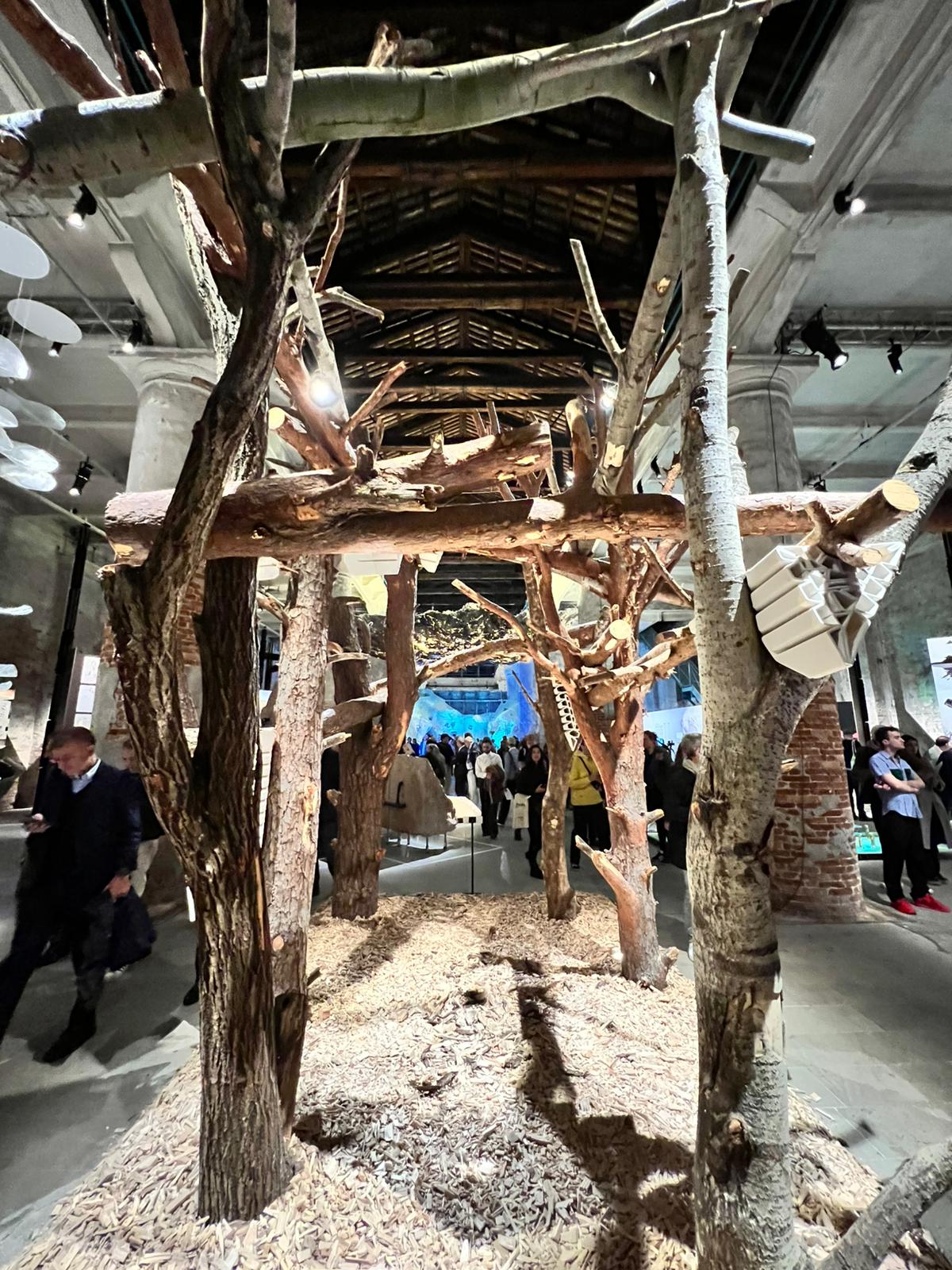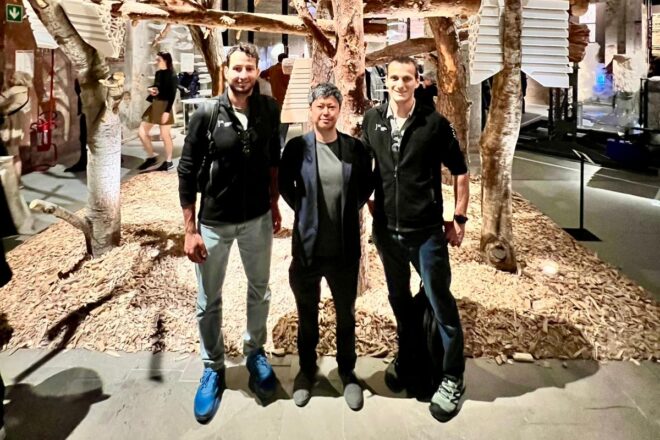There is also a bit of Trentino at the Biennale Architettura 2025, curated by Carlo Ratti, scheduled in Venice until 23 November. Among the works on display there is also Domino 3.0: Generated Living Structure, the exhibition project signed by Japanese architect Kengo Kuma, realised with the collaboration of ProM Facility, Trentino Sviluppo‘s advanced prototyping centre in Rovereto.
From climate emergency to rebirth: felled trees become architecture
At the heart of the creation are the trees felled by storm Vaia that devastated large areas of northern Italy in October 2018. Those apparently unusable logs were scanned in 3D and digitised using the scanner and technologies of the Rovereto centre, which was able to enhance every knot, fracture and imperfection left by the passage of the catastrophic climatic event.
Artificial intelligence and digital fabrication for sustainable building
An artificial intelligence model studied the irregular shapes of trees to integrate them into harmonious structures. The result? A new design language that challenges the exclusive use of standardised materials. To complete the work, bespoke 3D-printed joints were made to provide both sculptural dynamism and structural stability.
“It is a pleasure,” comments Nicola Polito, chief operating officer of Trentino Sviluppo, “to have collaborated on such a prestigious initiative, which demonstrates the great ductility and versatility of the centre, as well as the preparation of the colleagues who work there, capable of ranging from the medical sector to aeronautics, and even art. Not to mention the relationship that links our Technological Hubs to Kengo Kuma, the architect who first imagined and designed what would later become the new Be Factory production spaces in Progetto Manifattura”.
A creation that speaks to the future
Domino 3.0 is a powerful reflection on the role of architecture in the face of climate challenges. As stated in the introductory panel to the realisation:
“In the face of rapidly intensifying climate challenges, architecture must necessarily redefine itself.”
A regenerative approach is thus proposed, which aims to unite nature, technological innovation and local communities.
A choral work
The work is by Kengo Kuma, Sekisui House – Kuma Lab, University of Tokyo, Yutaka Matsuo, Matsuo – Iwasawa Lab, Norihiro Ejiri, Ejiri Structural Engineers, Minoru Yokoo, Kengo Kuma & Associates.
Partners include ProM Facility, FiemmePER, Caracol, D3Wood and Blue Biloba.



